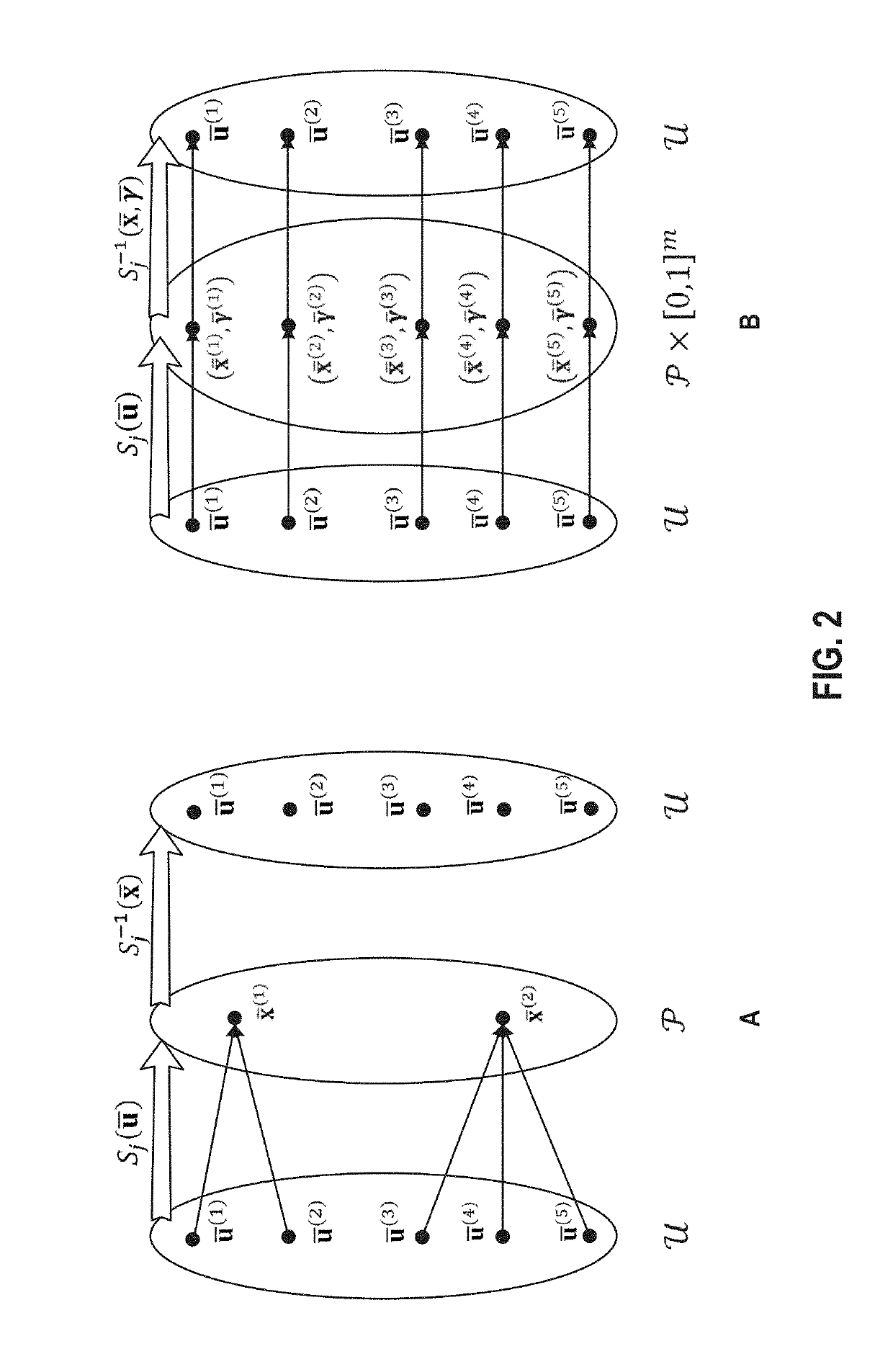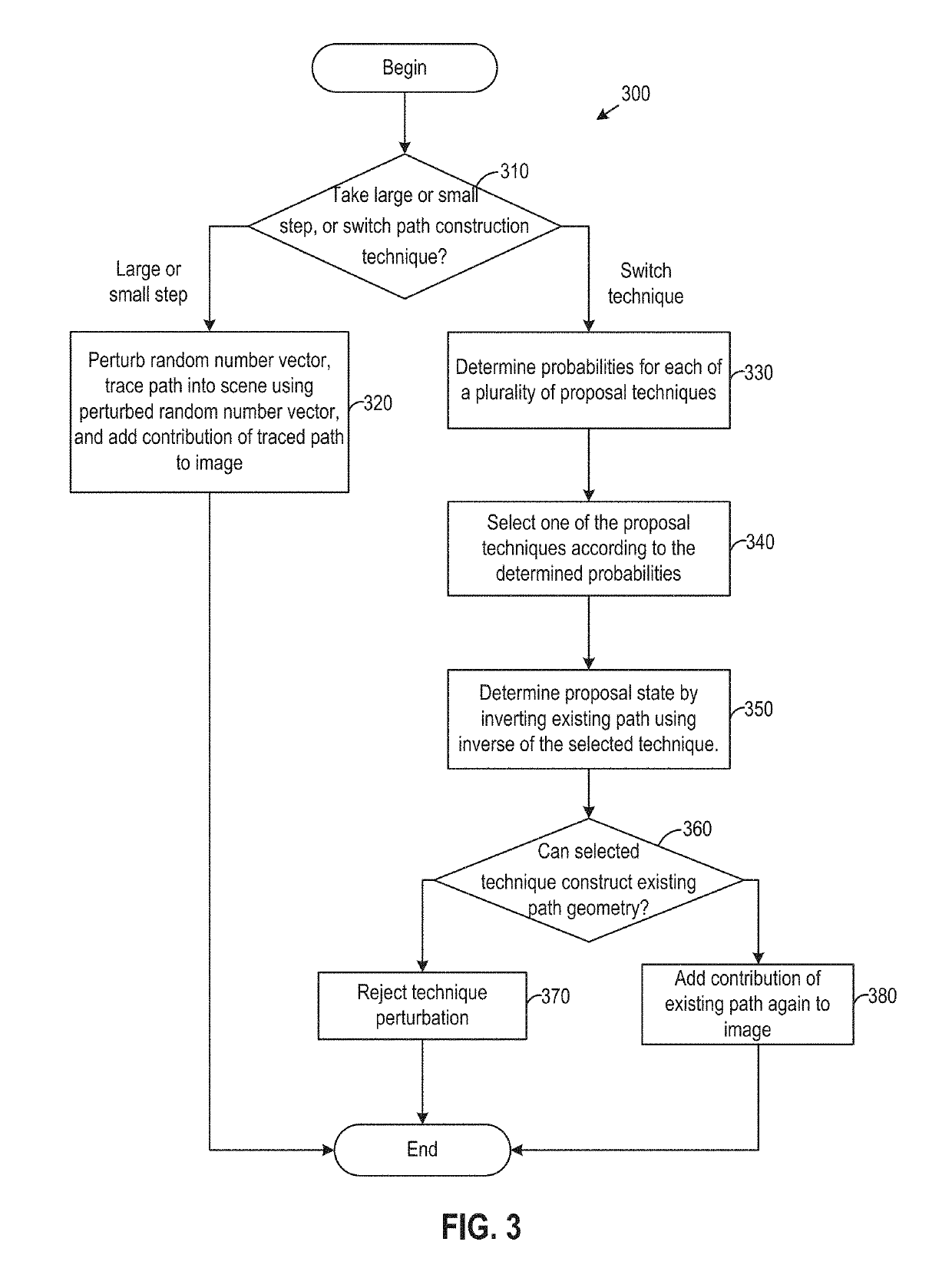Informed choices in primary sample space for light transport simulation
a light transport simulation and primary sample space technology, applied in the field of rendering images, can solve the problems of increasing noise and undesirable noise distribution in rendered images, difficult sampling problems of monte carlo rendering, and less successful local exploration of important regions of state space by local exploration techniques
- Summary
- Abstract
- Description
- Claims
- Application Information
AI Technical Summary
Benefits of technology
Problems solved by technology
Method used
Image
Examples
Embodiment Construction
[0014]Embodiments presented herein provide techniques for rendering three-dimensional (3D) virtual environments using reversible jumps. In one embodiment, mappings from random numbers to light paths are modeled as an explicit iterative random walk. Inverses of path construction techniques are employed to robustly turn light transport paths back into the random numbers that produced them. A path construction technique, also referred to herein as a “path sampling technique” or “sampling technique,” uses a path sampling function to map points in a space of random numbers, referred to as the primary sample space, to a path space, thereby generating a light path, also referred to as the path sample. As discussed, one embodiment turns such a path that has been constructed using one technique back into a random sample space vector using an inverse of the other technique. Doing so permits operations such as moving an arbitrary number of vertices from one path to another, and complex and err...
PUM
 Login to View More
Login to View More Abstract
Description
Claims
Application Information
 Login to View More
Login to View More - R&D
- Intellectual Property
- Life Sciences
- Materials
- Tech Scout
- Unparalleled Data Quality
- Higher Quality Content
- 60% Fewer Hallucinations
Browse by: Latest US Patents, China's latest patents, Technical Efficacy Thesaurus, Application Domain, Technology Topic, Popular Technical Reports.
© 2025 PatSnap. All rights reserved.Legal|Privacy policy|Modern Slavery Act Transparency Statement|Sitemap|About US| Contact US: help@patsnap.com



